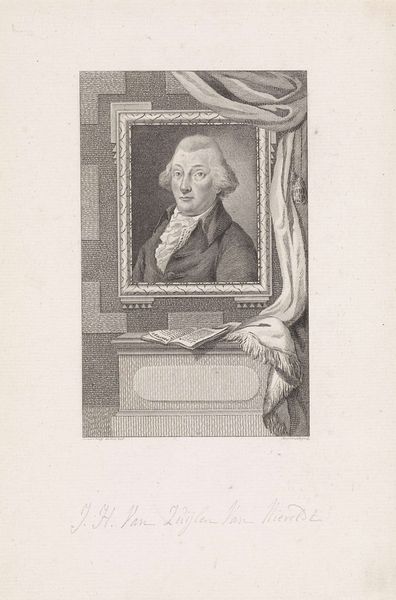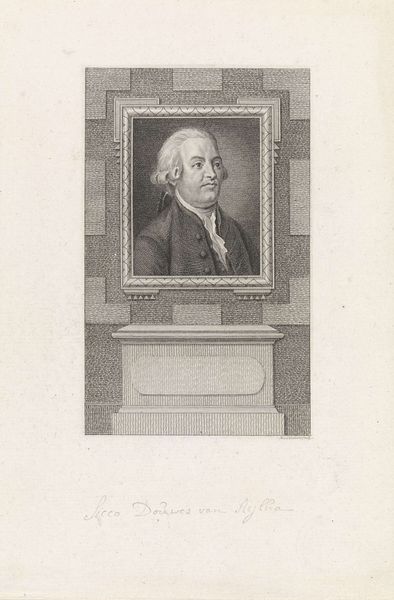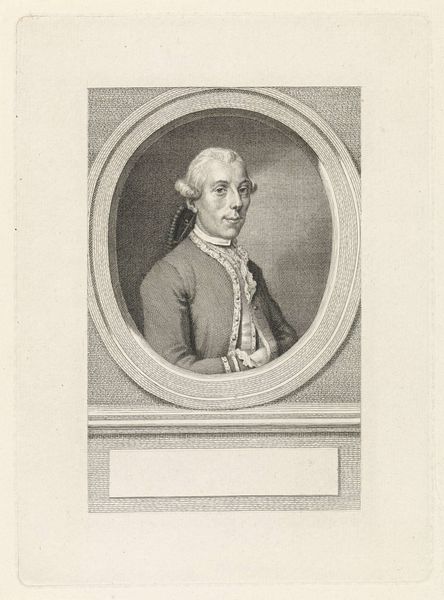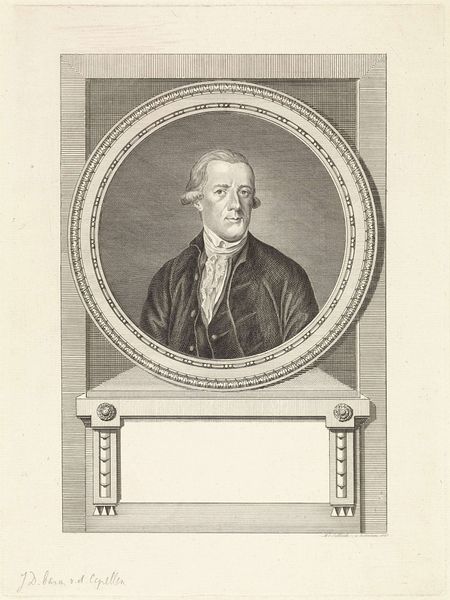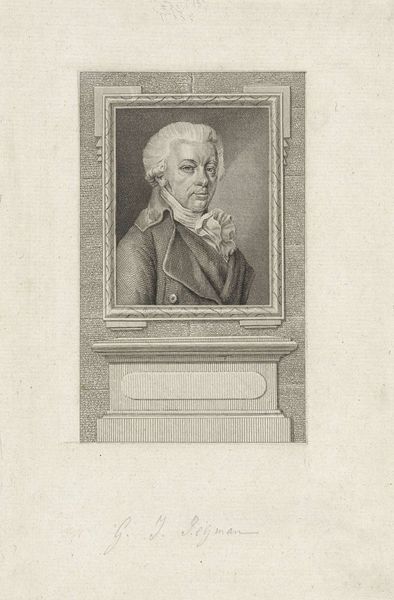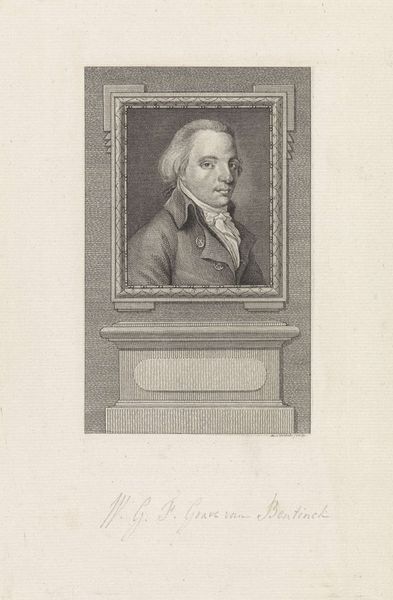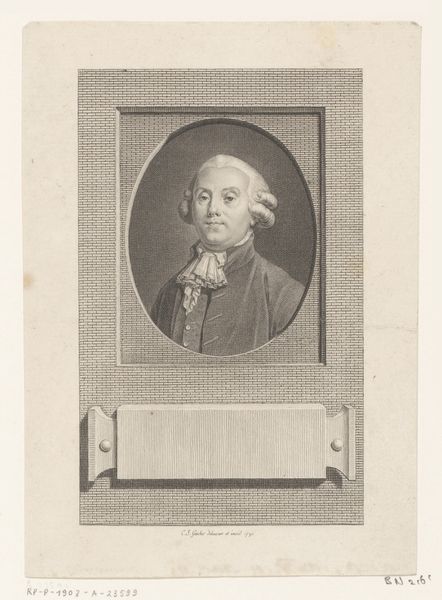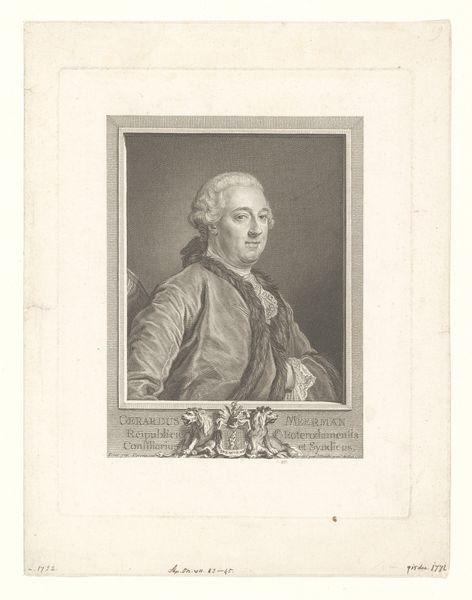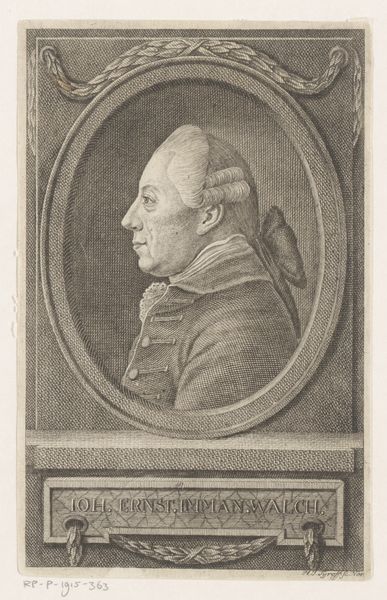
Portret van Karel Willem Ferdinand hertog van Brunswijk-Wolfenbüttel 1786 - 1809
0:00
0:00
reiniervinkeles
Rijksmuseum
print, engraving
#
portrait
#
neoclacissism
# print
#
figuration
#
history-painting
#
engraving
Dimensions: height 234 mm, width 155 mm
Copyright: Rijks Museum: Open Domain
Editor: We're looking at a print titled *Portret van Karel Willem Ferdinand hertog van Brunswijk-Wolfenbüttel*, created between 1786 and 1809 by Reinier Vinkeles. It’s housed in the Rijksmuseum, and its subdued palette makes it seem almost dreamlike. It feels very formal and imposing; what strikes you about this piece? Curator: You know, it's interesting you say "dreamlike". Looking at it, I feel like I'm peering back through a dense fog of history. This engraving offers a really neat portal into the Neoclassical period. It’s a statement on power, carefully constructed. Notice the architectural frame—it mimics the classical structures being rediscovered and idealized at the time. Think of it as stagecraft, carefully crafting an image of leadership. Does the subject himself seem like he’s ‘performing’ to you? Editor: That’s a great point! He does seem quite self-aware, almost posing. I hadn't really considered the theatrical aspect before. So it's not just about documentation, but about crafting an image? Curator: Exactly! Vinkeles isn’t just making a copy. He’s participating in building the Duke's legacy. Consider the very clean lines, the idealised presentation of the figure – no warts and all here! What feeling do *you* get from his gaze? Direct, isn't it? Editor: Now that you mention it, it feels a little…unsettling. Direct, but almost cold. Curator: Precisely. He's meant to inspire awe and maybe just a touch of unease, solidifying his authority. Seeing the power of art and politics intertwined like this always leaves me floored. It really wasn’t about "warts and all"! Editor: I’ll never look at portraits the same way again! There is a silent narrative to be read when interpreting one. Curator: That's it! You’re already speaking fluent art! It really gets you thinking.
Comments
No comments
Be the first to comment and join the conversation on the ultimate creative platform.
